Introduction to the Hiroshima & Miyajima Day Tour
A day tour to Hiroshima and Miyajima offers a profound blend of history, natural beauty, and spiritual charm. Visitors can witness the somber reminders of the past in Hiroshima, then travel across sparkling waters to Miyajima, home to one of Japan’s most photographed shrines. The journey brings together moving memorials, peaceful gardens, and vibrant streets, all within a single, unforgettable day.
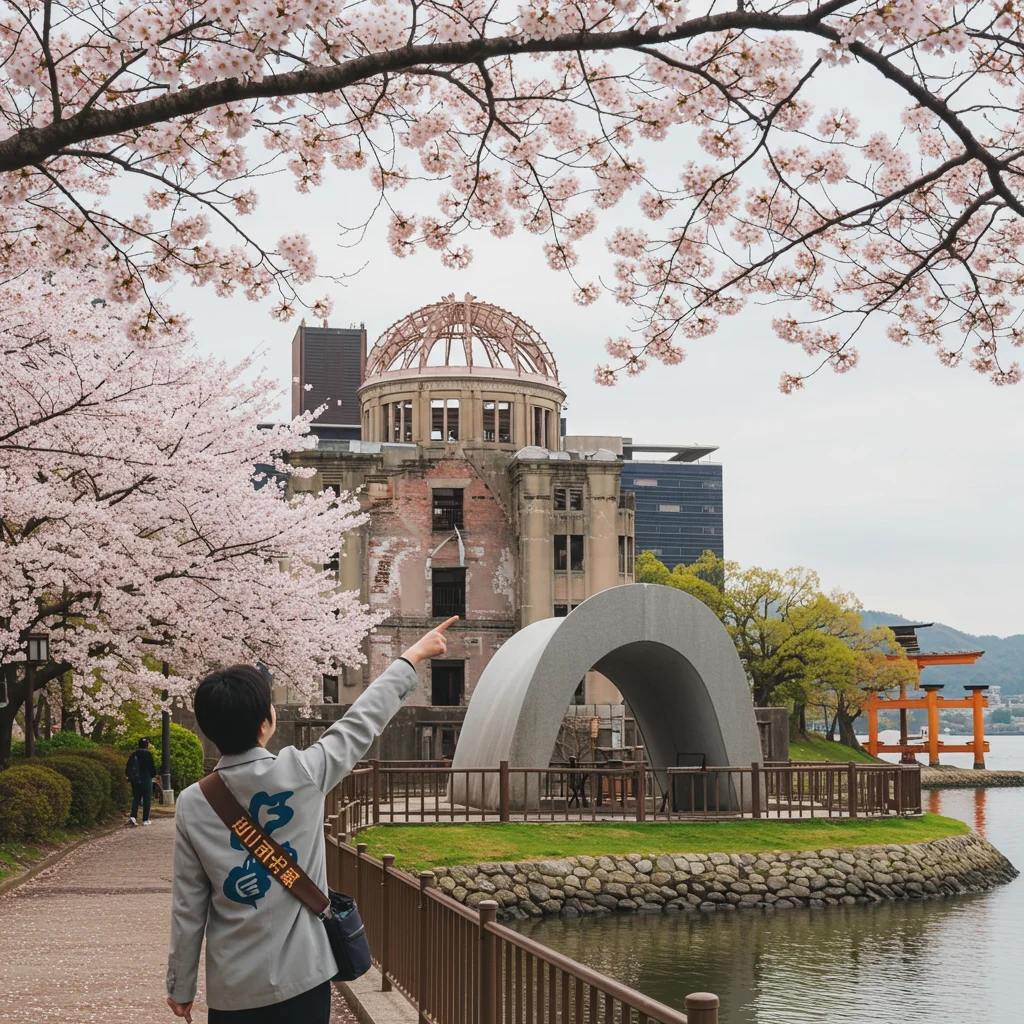
The contrast between the two destinations—one known worldwide for its tragic history, the other for its serene landscapes and sacred sites—creates a day packed with emotional resonance and scenic wonder.
Why Visit Hiroshima and Miyajima in One Day?
Combining Hiroshima and Miyajima in a single day trip allows travelers to experience the best of both locations without sacrificing depth or enjoyment. The proximity of the two, connected by efficient transport, makes this itinerary especially appealing for those on a tight schedule or wanting to maximize their time in western Japan.
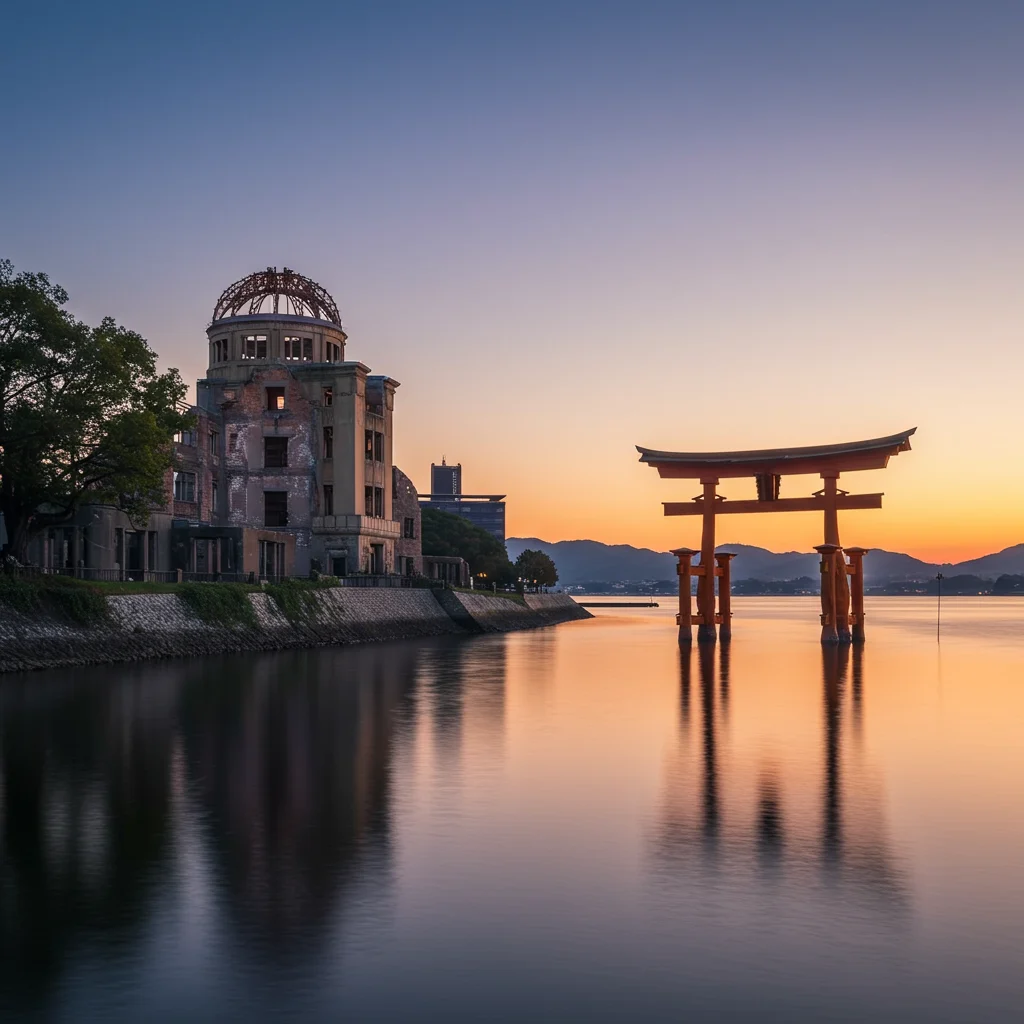
Is a Day Trip Enough for Hiroshima and Miyajima?
We often hear travelers wonder whether one day is sufficient to visit both Hiroshima and Miyajima. While each destination has enough attractions to fill several days, a thoughtfully planned itinerary ensures you can experience the highlights of both without feeling rushed. Prioritizing must-see sights and efficient transportation is key.
Who Is This Day Tour Best Suited For?
This tour is ideal for first-time visitors, families, solo explorers, and anyone eager to see Japan’s most iconic sites in an efficient manner. History enthusiasts, food lovers, and nature seekers alike will find something memorable in this itinerary. Those interested in other classic Japanese day trips may also appreciate our insights from the Kyoto & Nara day tour.
Hiroshima & Miyajima at a Glance: What Makes Them Iconic?
Both Hiroshima and Miyajima Island hold a special place in Japan’s cultural and historic landscape. Visitors are drawn by the compelling contrast between Hiroshima’s reflective memorials and Miyajima’s spiritual tranquility.
![]()
History and Significance of Hiroshima
Hiroshima is known globally for the events of August 6, 1945, when the atomic bomb forever changed the city’s destiny. Its legacy is preserved in poignant monuments and museums that serve as a powerful reminder of peace and resilience. Today, Hiroshima is a vibrant city, rebuilt with hope and a commitment to promoting peace worldwide.
The Spiritual Allure of Miyajima Island
Miyajima Island, officially named Itsukushima, is revered as one of Japan’s most sacred sites. The island’s forests, shrines, and friendly deer create a tranquil atmosphere, punctuated by the dramatic sight of the “floating” torii gate rising from the sea. Miyajima’s spiritual heritage and natural beauty have made it a UNESCO World Heritage Site and a cherished destination for centuries.
Planning Your Hiroshima & Miyajima Day Tour
Thoughtful planning ensures a smooth and fulfilling day tour. Timing, transportation, and the choice between guided or self-guided exploration all impact your experience.

When Is the Best Time to Visit?
The best seasons to visit Hiroshima and Miyajima are spring (March to May) and autumn (September to November). During these months, cherry blossoms or vibrant foliage provide a stunning backdrop. Summers can be humid, while winters are generally mild but may bring crisp winds across the Seto Inland Sea.
How to Get to Hiroshima from Major Cities
Most travelers arrive in Hiroshima via the shinkansen (bullet train) from Tokyo, Kyoto, or Osaka. The journey from Osaka takes about 1.5 hours, while travel from Tokyo can be completed in roughly four hours. The bullet train experience itself is a highlight, with views of the countryside flashing by at breathtaking speed. For those interested in high-speed rail adventures, our Tokyo bullet train guide offers additional insights.
How to Reach Miyajima from Hiroshima
To reach Miyajima, take a local train or tram to Miyajimaguchi Station, then board a ferry across the bay. The short ferry ride offers panoramic views of the island and its iconic torii gate, especially striking as the sun glints off the water.
Should You Join a Guided Tour or DIY?
Both guided tours and independent travel have their merits. Guided options often include insightful commentary, skip-the-line access, and efficient logistics, which can be especially helpful for first-time visitors or those with limited time. Adventurous travelers may prefer the flexibility of a self-guided route, building a personalized itinerary at their own pace.
For those seeking convenience, platforms like Viator allow travelers to book activities and find tours that suit their interests and schedule.
Sample Itinerary: Hiroshima & Miyajima in One Day
A well-structured itinerary helps you experience the essence of both Hiroshima and Miyajima in a single day. Here’s a suggested schedule to make the most of your time.

Morning: Exploring Hiroshima
Start your day at Hiroshima Peace Memorial Park, where the early morning light casts gentle shadows over the monuments. Take time to visit the A-Bomb Dome, Children’s Peace Monument, and the Peace Memorial Museum. Stroll through Shukkeien Garden for a moment of tranquility before the city fully awakens.
Afternoon: Discovering Miyajima
After a quick lunch, head to Miyajima Island via ferry. Walk along Omotesando Shopping Street, enjoying the aroma of grilled oysters and the gentle calls of wandering deer. Visit the Itsukushima Shrine, marvel at the “floating” torii gate, and, if time allows, hike or take the ropeway up Mount Misen for sweeping views of the Seto Inland Sea.
Evening: Return and Reflections
As dusk settles, return to Hiroshima. The city’s illuminated streets and peaceful atmosphere offer a chance to reflect on the day’s experiences. Many visitors find this contrast between the solemnity of Hiroshima and the spiritual calm of Miyajima deeply moving.
As experts often say:
“Travel is more than the seeing of sights; it is a change that goes on, deep and permanent, in the ideas of living.”
Getting Around: Transportation Tips
Efficient transportation is essential for a smooth day tour. Hiroshima and Miyajima are well connected by rail, tram, and ferry, making it easy to maximize your time at each site.
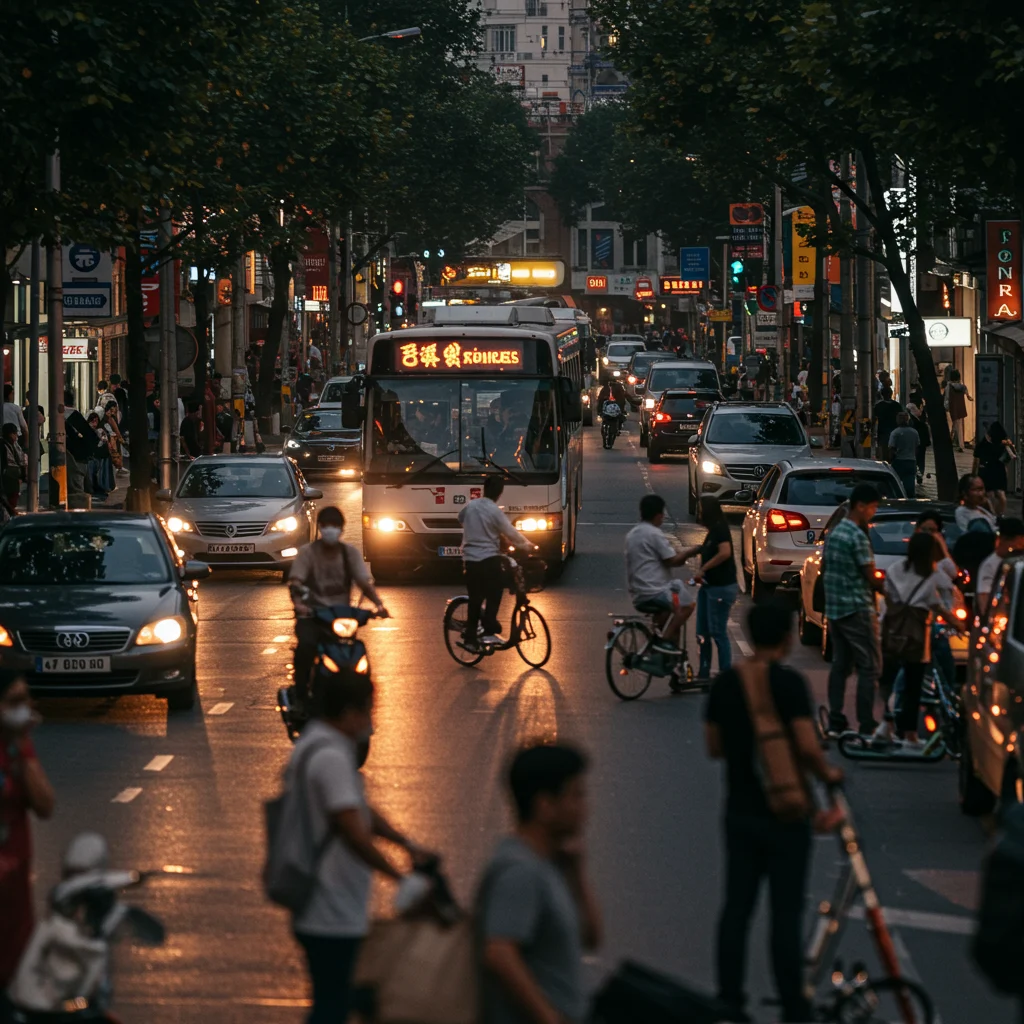
Using the Japan Rail Pass for the Day Trip
The Japan Rail Pass is valid on most trains to Hiroshima and includes the JR ferry to Miyajima. This pass is cost-effective and convenient, especially for travelers coming from other major cities or planning to visit multiple destinations in Japan.
Public Transport Options in Hiroshima
Hiroshima features an extensive tram network, known as Hiroden, as well as buses and taxis. The trams are a scenic and nostalgic way to travel between the city’s main attractions, offering glimpses of daily life through wide windows.
Ferry Options to Miyajima: Which Should You Choose?
There are two main ferry operators from Miyajimaguchi to Miyajima Island: JR and Matsudai. Both offer frequent departures, but only the JR ferry is covered by the Japan Rail Pass. The short journey across the bay is an experience in itself, with sea breezes and the sound of waves enhancing the anticipation.
Can You Bike Between Attractions?
While cycling within Hiroshima is possible and enjoyable, biking between Hiroshima and Miyajima is not practical due to the ferry crossing. However, renting a bike on either side can be a great way to cover more ground, especially in Hiroshima’s flat city center. For more on cycling adventures in Japan, see our article on the Arashiyama bike tour in Kyoto.
Must-See Sights in Hiroshima
Hiroshima is home to a wealth of attractions, each telling a unique story. From peaceful gardens to bustling shopping streets, these highlights offer a multifaceted view of the city.

Hiroshima Peace Memorial Park
This expansive park is a tribute to the victims of the atomic bombing and a symbol of hope for world peace. The quiet pathways, lined with trees and monuments, invite contemplation and remembrance.
A-Bomb Dome: History and Impact
The A-Bomb Dome stands as a haunting reminder of Hiroshima’s past. Its skeletal structure and exposed brickwork create a powerful visual, especially when viewed at sunrise or sunset.
Children’s Peace Monument
Inspired by the story of Sadako Sasaki, the Children’s Peace Monument honors the memory of children lost to the atomic bombing. Thousands of colorful paper cranes, sent from around the world, flutter in the breeze, adding a sense of hope and unity.
Peace Memorial Museum: What to Expect
The Peace Memorial Museum offers an in-depth look at the events of August 1945 and their aftermath. Exhibits include personal stories, artifacts, and multimedia presentations, providing a sobering but essential perspective on history.
Shukkeien Garden: A Tranquil Escape
Shukkeien Garden is a meticulously landscaped oasis in the heart of Hiroshima. Stone bridges arch over koi-filled ponds, and seasonal flowers add bursts of color. The gentle sound of rustling bamboo and trickling water creates a calming atmosphere, perfect for a brief respite.
Hiroshima Castle: Samurai History
The reconstructed Hiroshima Castle offers insights into the city’s feudal past. Climb to the top of the main keep for panoramic views, and explore exhibitions on samurai culture and local history.
Exploring Hondori Shopping Street
is a lively pedestrian arcade packed with shops, restaurants, and street food vendors. The cheerful buzz of conversation and the aroma of freshly cooked okonomiyaki fill the air, making it a perfect stop for souvenirs or a quick snack.
Iconic Experiences on Miyajima Island
Miyajima Island is a place where the spiritual and the scenic meet. Its unique sights and experiences leave lasting impressions on all who visit.
![]()
The Floating Torii Gate: When Is the Best View?
The Great Torii Gate of Itsukushima Shrine appears to float on the water at high tide, glowing orange in the sunlight. At low tide, visitors can walk out onto the sand for an up-close view. Both times offer distinct photographic opportunities, so check the tide schedule before your visit.
Itsukushima Shrine: UNESCO World Heritage Site
Itsukushima Shrine is renowned for its elegant architecture, vermillion pillars, and scenic waterfront setting. The shrine’s walkways seem to hover above the sea, especially during high tide, creating a magical effect that draws pilgrims and tourists alike.
Mount Misen: Hiking Trails and Panoramic Views
Mount Misen rises above Miyajima, crowned by ancient temples and lush forests. Hiking trails wind through dense woods, with occasional glimpses of the sparkling Seto Inland Sea below. Adventurous visitors can take the ropeway partway up, then ascend the final section on foot for breathtaking views.
Miyajima’s Friendly Deer: What Should You Know?
Miyajima’s tame deer roam freely through the streets and parks, often approaching visitors in search of snacks. While their gentle demeanor is charming, it’s important to avoid feeding them human food and to treat them with respect.
Omotesando Shopping Street: Souvenirs and Snacks
Omotesando Shopping Street is lined with stalls selling local crafts, maple leaf-shaped sweets, and freshly grilled oysters. The lively atmosphere, punctuated by the sizzle of food and the chatter of visitors, makes this a memorable stop.
Try These Local Foods in Hiroshima and Miyajima
Sampling regional cuisine is a highlight of any visit. Hiroshima and Miyajima are renowned for their distinct flavors and culinary traditions.
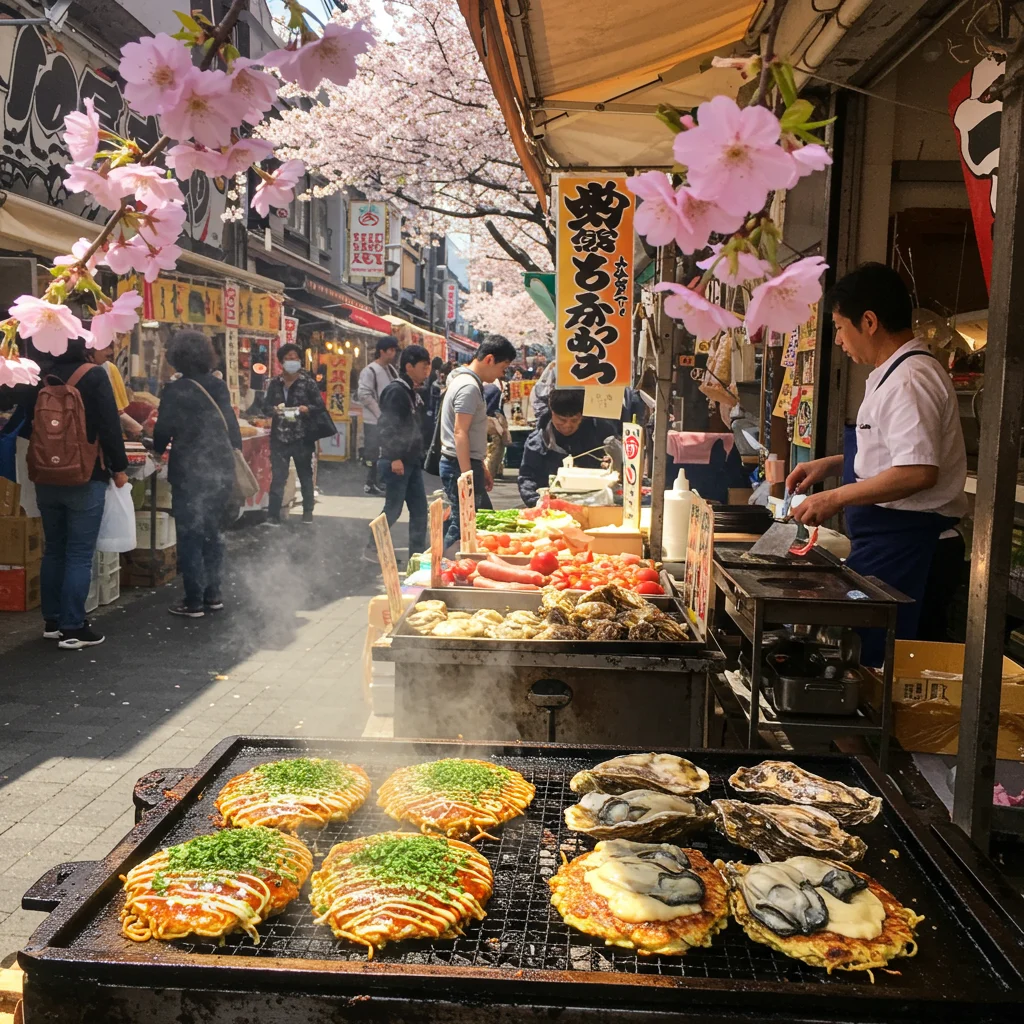
Hiroshima-Style Okonomiyaki: Where to Eat It
Hiroshima-style okonomiyaki is a savory pancake layered with cabbage, noodles, and a variety of fillings, then grilled to perfection. Okonomimura, a multi-story building filled with okonomiyaki stalls, is a favorite spot to try this local dish.
Momiji Manju: Miyajima’s Sweet Specialty
Momiji manju are maple leaf-shaped cakes filled with sweet red bean paste. These soft, warm treats are a Miyajima specialty, perfect as souvenirs or a mid-afternoon snack.
Oysters: Miyajima’s Seafood Delicacy
Fresh oysters are a local delicacy in Miyajima, served grilled, fried, or raw. Their briny, ocean-fresh flavor is enhanced by the island’s pristine waters and careful preparation.
Vegetarian and Vegan Options
Vegetarian and vegan travelers will find options such as vegetable okonomiyaki, tofu dishes, and seasonal vegetable tempura. Many restaurants are happy to accommodate dietary needs if asked in advance.
Practical Tips for a Smooth Day Tour
A little preparation goes a long way in making your day tour enjoyable and stress-free. Here are some practical recommendations for a seamless experience.

How to Pack Light for the Day
Carry only essentials: a compact bag with a water bottle, snacks, camera, and travel documents. Lightweight rain gear and a portable phone charger can be helpful, especially if you plan to take many photos.
What to Wear for Comfort and Respect
Dress in comfortable, weather-appropriate clothing and wear sturdy shoes, as you will be walking and possibly hiking. Modest attire is recommended for shrine visits—avoid sleeveless tops and short shorts.
Is Luggage Storage Available at Stations?
Both Hiroshima and Miyajimaguchi stations offer coin lockers for luggage storage. These are convenient for travelers who want to keep their belongings secure while exploring.
Staying Connected: Wi-Fi and SIM Cards
Free Wi-Fi is widely available in Hiroshima’s public spaces and hotels. For reliable connectivity, consider renting a pocket Wi-Fi or purchasing a Japanese SIM card at the airport or train station.
Cultural Etiquette: Do’s and Don’ts
Be mindful of etiquette: bow when greeting, speak softly in public, and remove shoes when required. It’s customary to wash hands and mouth at shrine entrances using the provided ladles.
Accessibility: Can Everyone Enjoy This Tour?
Most major attractions in Hiroshima and Miyajima are accessible to visitors with mobility needs. Elevators, ramps, and accessible restrooms are available at key sites, though some natural trails on Miyajima may be challenging for wheelchairs or strollers.
Budgeting Your Hiroshima & Miyajima Day Trip
Careful budgeting helps you make the most of your day without surprises. Here’s what to expect in terms of costs and money-saving opportunities.
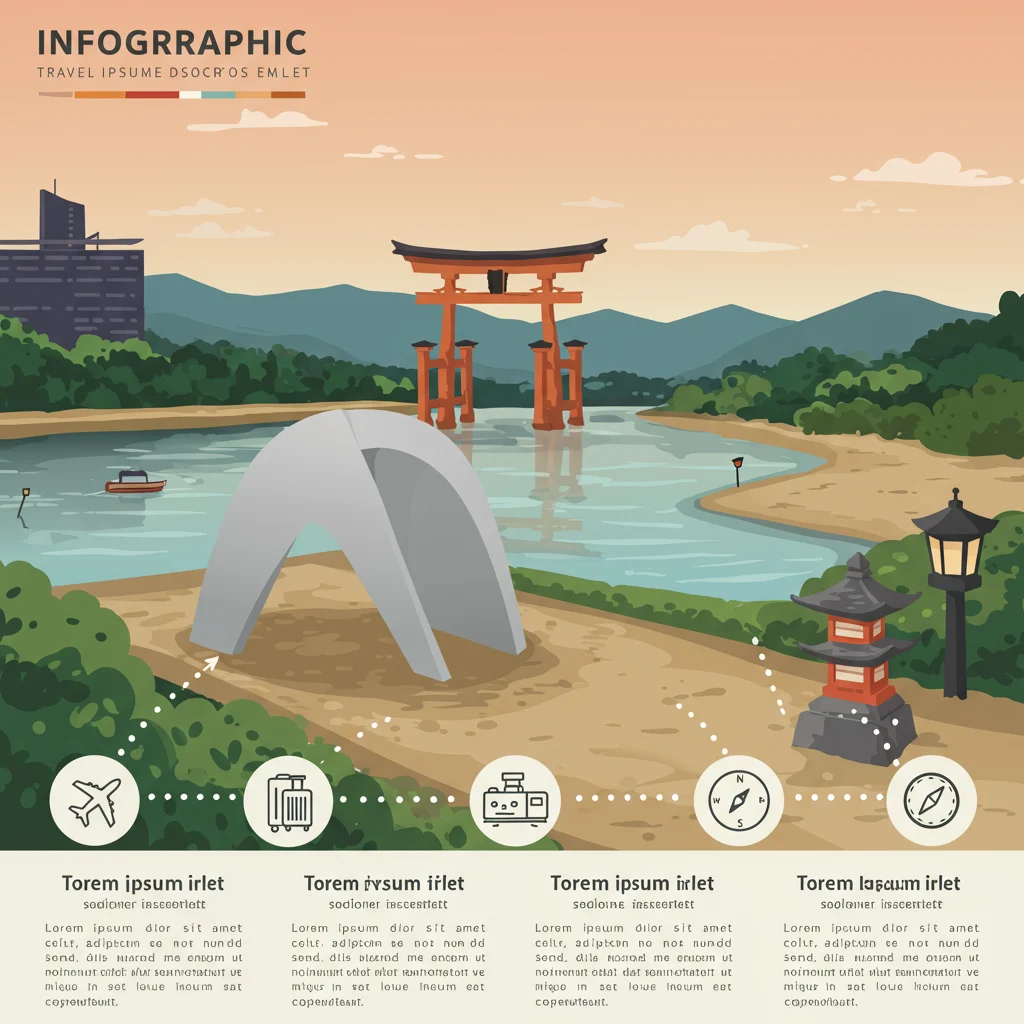
Estimated Costs: Transport, Food, and Entry Fees
Expect to spend approximately 10,000–15,000 yen per person, including round-trip transportation, ferry rides, meals, and entry fees. Using a Japan Rail Pass can significantly reduce transport costs.
Are There Any Free Attractions?
Several attractions, such as Hiroshima Peace Memorial Park and the A-Bomb Dome, are free to visit. Walking the streets of Miyajima and exploring its forests also comes at no cost.
Money-Saving Tips for Travelers
- Purchase a day pass or use the Japan Rail Pass for unlimited train travel.
- Eat at local markets or food stalls for affordable, authentic meals.
- Bring a reusable water bottle to refill at public fountains.
Where to Store Luggage During the Day
Travelers with suitcases or heavy bags can take advantage of convenient storage options in both Hiroshima and Miyajima.
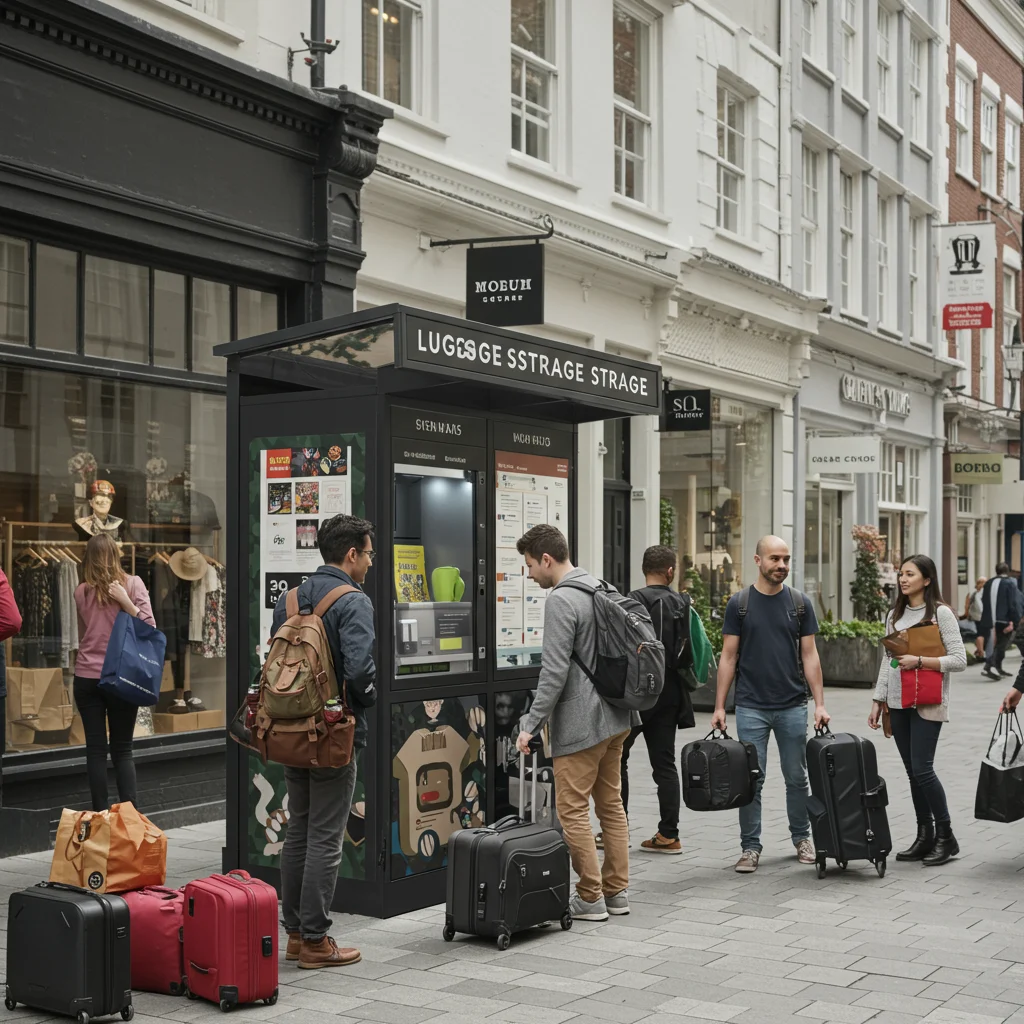
Coin Lockers at Hiroshima Station
Hiroshima Station offers a wide range of coin lockers in various sizes. These are secure and easy to use, located near the main exits and ticket gates.
Luggage Storage on Miyajima Island
Luggage storage is available near the ferry terminal on Miyajima, allowing you to explore the island unburdened. Early arrival is recommended, as lockers can fill up quickly during peak seasons.
Recommended Accommodation Options
Choosing the right accommodation can enhance your experience, especially if you wish to start early or extend your stay.

Best Hotels in Hiroshima for Early Starts
Hotels near Hiroshima Station offer easy access to transportation and early-morning departures. Many properties provide Western and Japanese-style rooms, complimentary breakfast, and helpful staff.
Should You Stay Overnight on Miyajima?
Spending the night on Miyajima Island allows you to enjoy the peaceful atmosphere after day-trippers depart. Early mornings and late evenings on the island are especially tranquil, with views of the illuminated torii gate and gentle waves lapping the shore.
Ryokan Experiences: Traditional Japanese Inns
For a cultural immersion, consider staying at a ryokan. These traditional inns offer tatami rooms, futon bedding, and multi-course kaiseki dinners. The experience of relaxing in a yukata and enjoying local hospitality is unforgettable.
Family-Friendly Tips for the Day Tour
Traveling with children to Hiroshima and Miyajima can be rewarding and educational. With a bit of planning, families can enjoy a safe and memorable adventure.
Is the Tour Suitable for Kids?
Yes, the day tour is suitable for children, though sensitive topics at the Peace Memorial Museum may require parental guidance. Outdoor attractions, gardens, and friendly deer on Miyajima offer plenty of opportunities for play and discovery.
Best Child-Friendly Activities
- Watching the deer on Miyajima
- Exploring Shukkeien Garden’s bridges and ponds
- Sampling sweet treats on Omotesando Shopping Street
Safety Tips When Traveling with Children
Keep an eye on children near water and busy streets. Use strollers with caution on uneven paths or stairs, and carry identification for each child in case of separation.
Photography Tips: Capturing Iconic Moments
Both Hiroshima and Miyajima offer countless opportunities for memorable photos. From the solemn beauty of memorials to the vibrant colors of shrines, your camera will be in constant use.
![]()
Best Photo Spots in Hiroshima
Top spots include the A-Bomb Dome at sunset, the view from Hiroshima Castle’s observation deck, and the serene paths of Shukkeien Garden. Early mornings offer soft lighting and fewer crowds.
Capturing the Floating Torii at High and Low Tide
For dramatic shots of the floating torii gate, plan your visit around the tide schedule. High tide creates the illusion of the gate hovering on water, while low tide lets you walk up close and capture its impressive scale.
Drone Photography Rules and Restrictions
Drone use is strictly regulated in both Hiroshima and Miyajima, especially near historic sites and shrines. Always check local guidelines and obtain necessary permits before flying.
Souvenir Shopping: What to Bring Home
Shopping for souvenirs is a delightful way to remember your journey. Hiroshima and Miyajima offer unique items that reflect their history and culture.
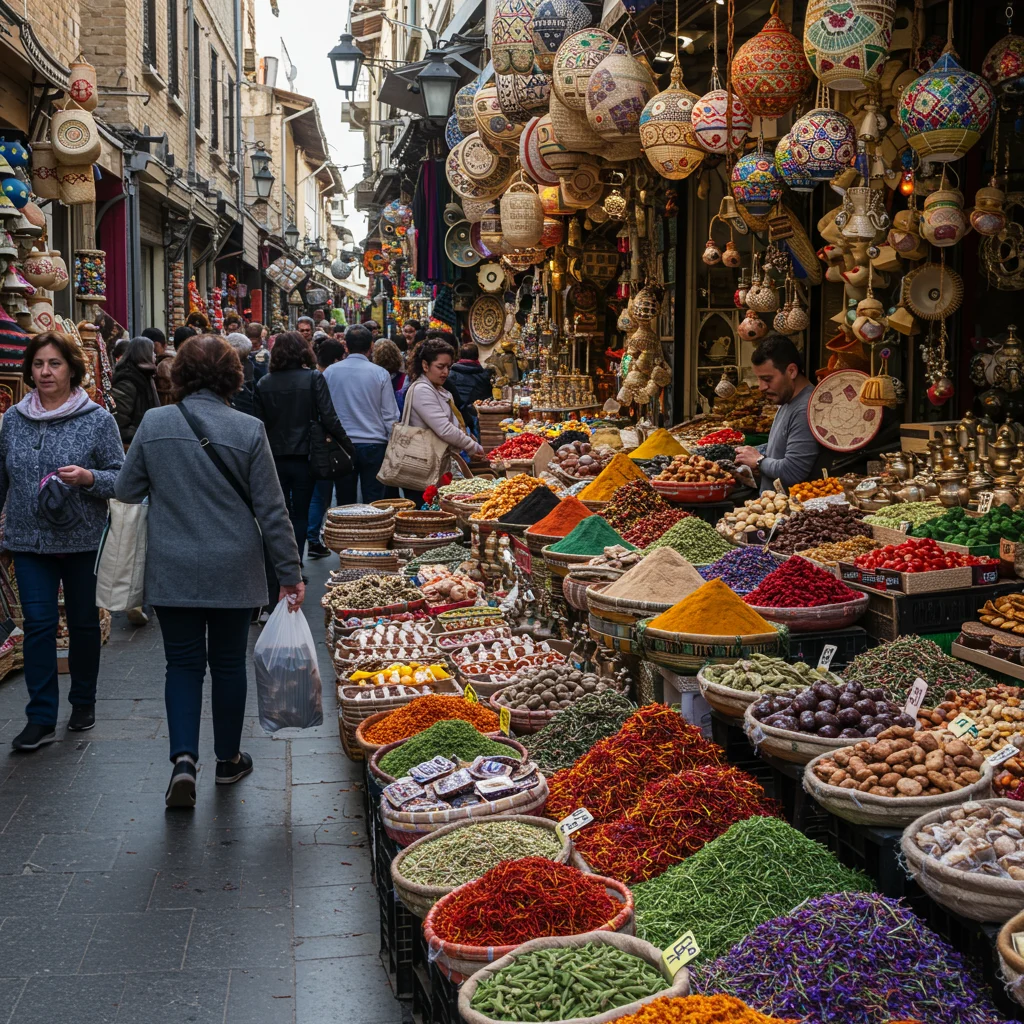
Top Souvenirs from Hiroshima
Popular choices include Momiji manju, local sake, and peace-themed gifts from Hondori Shopping Street. Intricately crafted paper cranes are also meaningful keepsakes.
Unique Finds on Miyajima Island
On Miyajima, look for handmade wooden crafts, traditional ceramics, and deer-themed trinkets. The island’s specialty foods—such as oyster products and maple leaf cakes—make excellent edible souvenirs.
Responsible Tourism: How to Travel Respectfully
Travelers play an important role in preserving the beauty and culture of Hiroshima and Miyajima. Responsible tourism helps support local communities and protects the environment for future visitors.
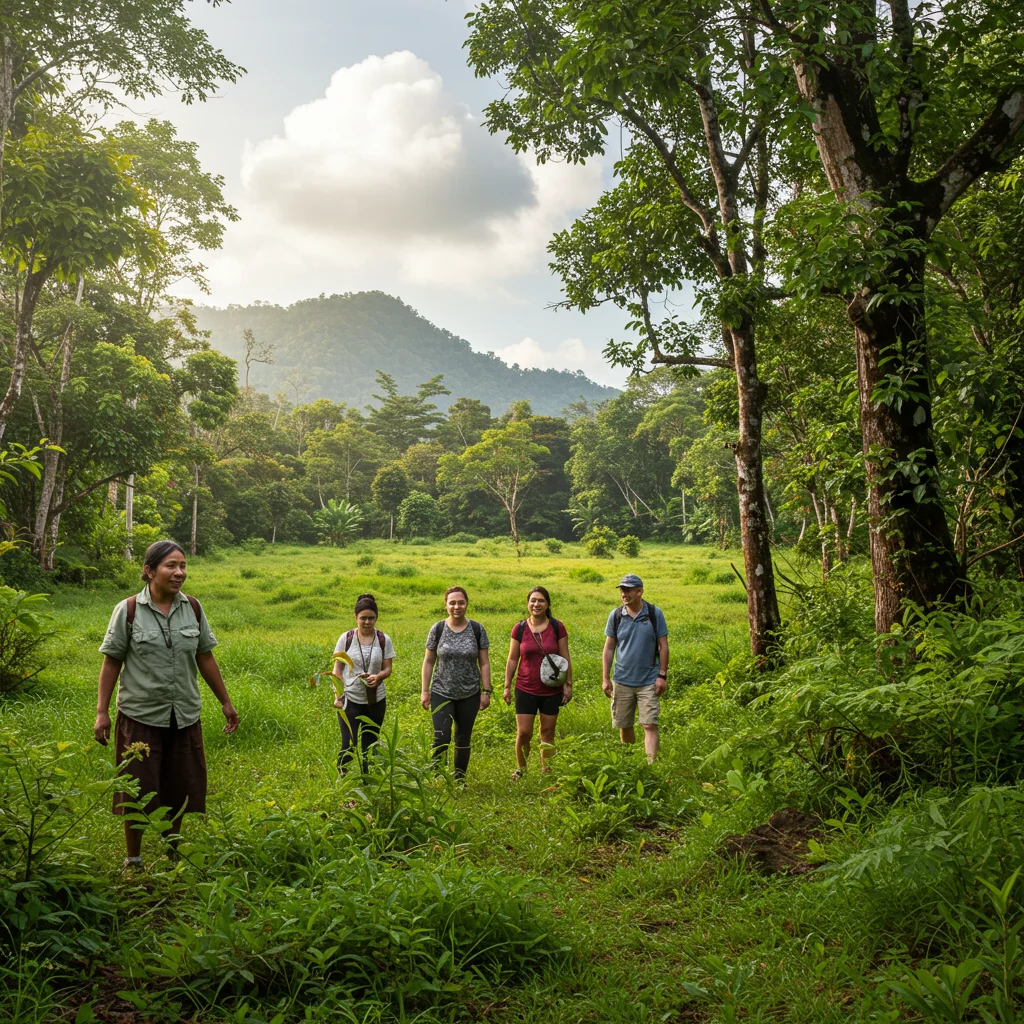
Supporting Local Businesses
Choose to dine at family-run restaurants, shop at local markets, and stay at small inns when possible. These choices help sustain the region’s unique character and economy.
Minimizing Environmental Impact
- Dispose of trash properly and recycle where possible.
- Use reusable bottles and bags to reduce waste.
- Respect wildlife by not feeding or disturbing animals.
Frequently Asked Questions About the Day Tour
We address some of the most common questions travelers have about visiting Hiroshima and Miyajima in one day.

Can You Visit Hiroshima and Miyajima Independently?
Absolutely. Both destinations are easy to access via public transport, and clear signage in English makes navigation straightforward. Many travelers enjoy the flexibility of a self-guided trip, while others prefer the insights and convenience of a guided tour.
How Much Time Should You Spend at Each Site?
Allocate at least three hours in Hiroshima for the Peace Park and key sites, and three to four hours on Miyajima for the shrine, shopping street, and a possible hike. Allow extra time for ferry transfers and meals.
What Happens If It Rains?
Rain can add a tranquil beauty to gardens and shrines, with misty views and fewer crowds. Bring an umbrella or raincoat, and take advantage of indoor attractions like the Peace Memorial Museum or local cafes.
Alternative Day Tour Ideas Near Hiroshima
If you have additional time, consider exploring other destinations near Hiroshima for a richer travel experience.
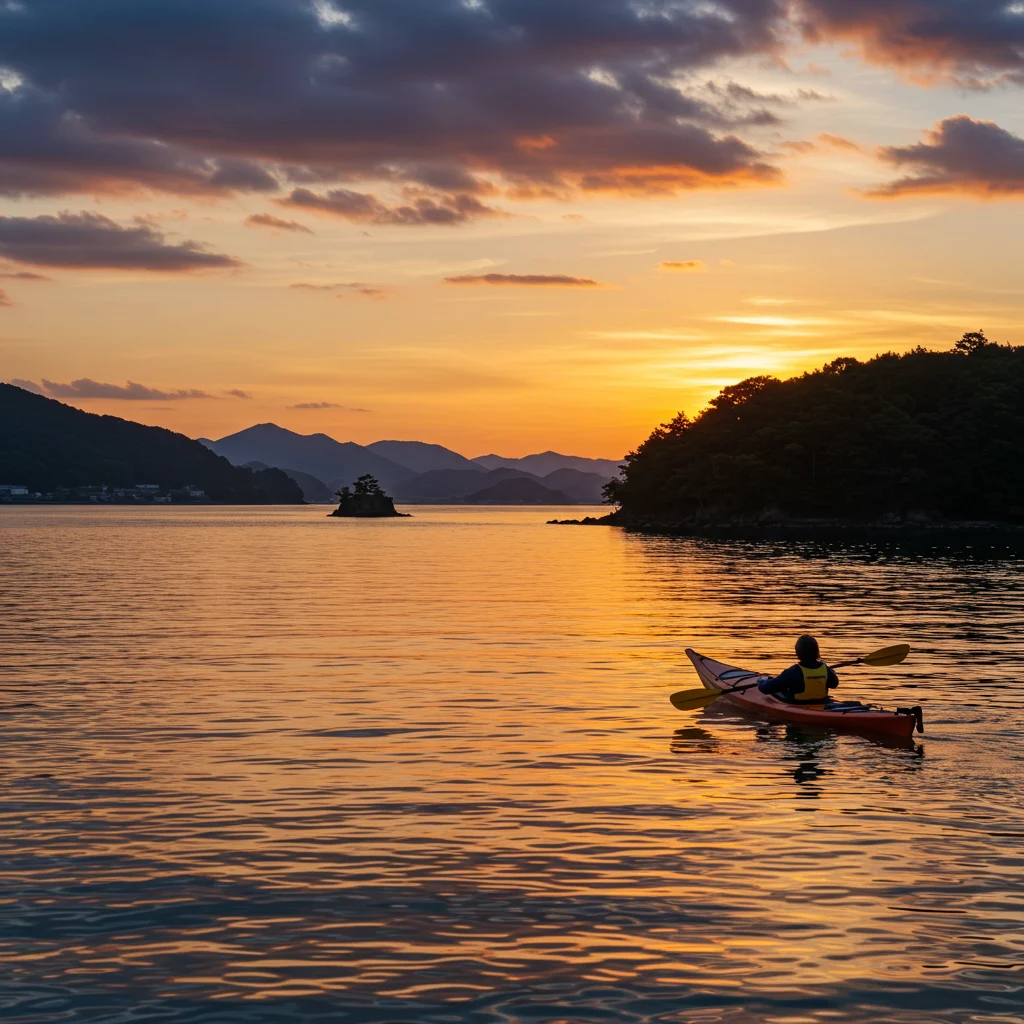
Onomichi: Cycling the Shimanami Kaido
Onomichi is famous for the Shimanami Kaido cycling route, which spans scenic bridges and islands across the Seto Inland Sea. Even a short section of this route offers breathtaking coastal views and a refreshing breeze.
Iwakuni and the Kintai Bridge
A short train ride from Hiroshima, Iwakuni features the iconic Kintai Bridge, a series of elegant wooden arches spanning the Nishiki River. The nearby castle and samurai district add to the town’s historic charm.
How to Book on Viator
Booking your Hiroshima and Miyajima day tour is straightforward with Viator. The platform allows you to compare tour options, read verified reviews, and secure your place in advance. Simply search for your desired date, select your preferred itinerary, and complete your booking online.

Using Viator ensures access to reputable guides and well-organized tours, giving you peace of mind as you plan your trip.
Conclusion: Making the Most of Your Hiroshima & Miyajima Day Tour
A day spent between Hiroshima and Miyajima leaves lasting impressions—of resilience, beauty, and the enduring spirit of Japan. Thoughtful planning, an open mind, and a sense of respect for both history and nature will make your trip meaningful and memorable.

For more expert travel inspiration and detailed guides, we recommend visiting Izase at izase.com, where you’ll find resources to enrich every step of your journey.
“Disclaimer: This information is accurate to the best of our knowledge; however, there may be changes or mistakes. Please verify exact details on the Viator booking page.”

